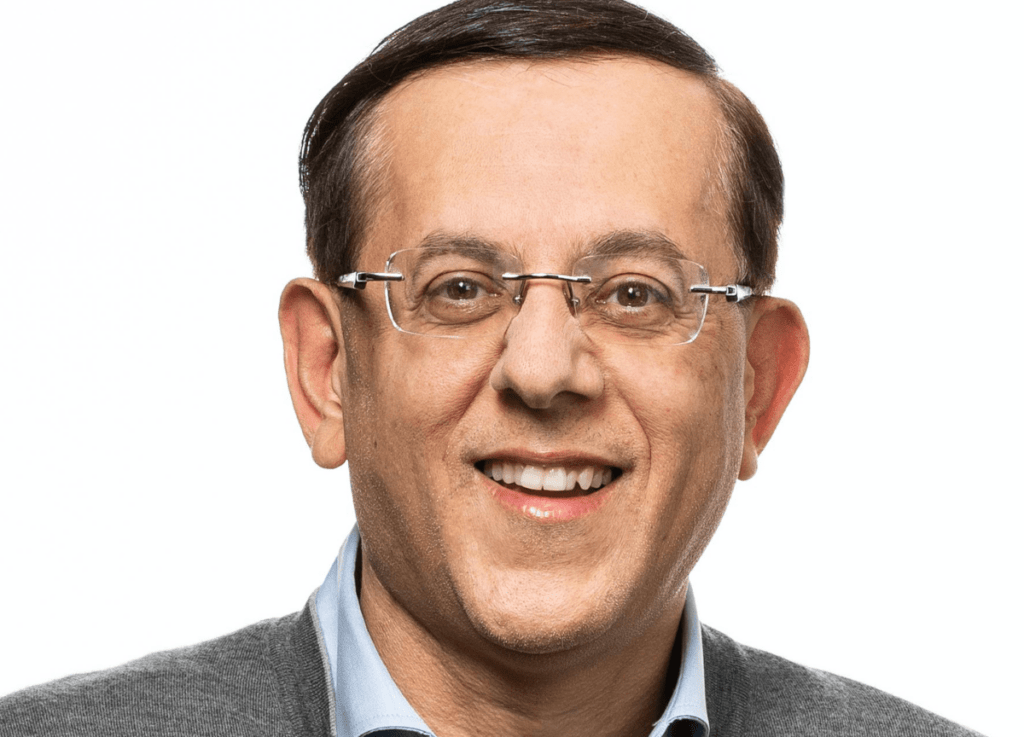Shernaz Daver is small in stature but big in influence. Over three decades in Silicon Valley, she’s mastered the art of getting anyone on the phone with a simple text: “Can you call me?” or “Let’s talk tomorrow.” And they do.
Now, as she prepares to leave Khosla Ventures (KV) after nearly five years as the firm’s first-ever CMO, Daver could be an indicator of where the tech world is headed. Her career has been a remarkably accurate barometer of the industry’s next big thing to date. She was at Inktomi during the search wars of the late ’90s (the dot.com high-flier hit a $37 billion valuation before spiraling back to earth). She joined Netflix when people laughed at the idea of ordering DVDs online. She helped Walmart compete with Amazon on technology. She worked with Guardant Health to explain liquid biopsies before Theranos made blood testing infamous. She was even dressed down once by Steve Jobs over the marketing of a Motorola microprocessor (which could be its own short story).
KV’s founder Vinod Khosla portrays his work with Daver thus: “Shernaz had a strong impact at KV as she helped me build our KV brand and was a valuable partner to our founders. I’m grateful for her time here and know we’ll stay close.”
Asked about why she is leaving the firm, Daver was typically matter-of-fact. “I came to do a job, and the job was to build out the KV brand and to build out Vinod’s brand, and to help set up a marketing organization such that our companies and portfolios have somebody to go to. And I’ve done all of that.”
It’s certainly true that when founders think of top AI investors, two to three venture firms spring to mind, and one of them is KV. It’s quite a turnaround for a firm that, for a period, was better known for Khosla’s legal battle over beach access than for his investments.
The Daver effect
Daver says her success at KV came down to finding the firm’s essence and hammering it relentlessly. “At the end of the day, a VC firm doesn’t have a product,” she explains. “Unlike any company — pick one, Stripe, Rippling, OpenAI — you have a product. VCs don’t have a product. So at the end of the day, a VC firm is actually the people. They are the product itself.”
KV had already identified itself as “bold, early, and impactful” before she arrived. But she says she took those three words and “plastered them everywhere.” Then she found the companies to substantiate each claim.
Techcrunch event
San Francisco
|
October 13-15, 2026
The breakthrough came with that middle word: early. “What is the definition of early?” she asks. “Either you create a category, or you’re the first check in.” When OpenAI released ChatGPT in 2022, Daver asked Sam Altman if it was okay to talk about KV being the first VC investor. He said yes.
“If you can own that first investor narrative, it helps a lot,” she says, “because sometimes what happens in VC is it takes 12 years or 15 years for any kind of liquidity event, and then people forget. If you can say it right from the start,” people remember.
She repeated the formula, time and again. KV was the first investor in Square. It was the first investor in DoorDash. Behind the scenes, it took two and a half years of persistent effort for that message to stick, she says. “To me, that’s fast, just because the industry is moving really fast.” Now when Khosla appears on stage or elsewhere, he is almost uniformly described as the first investor in OpenAI.
Which brings us to perhaps Daver’s most important lesson for the people she works with: To get your point across, you have to repeat yourself far more than feels comfortable.
“You’re on mile 23, the rest of the world is on mile five,” she tells founders who complain they’re tired of telling the same story. “You have to repeat yourself all the time, and you have to say the same thing.”
It’s harder than it sounds, especially when dealing with people mired in day-to-day operations that invariably feel more critical. “Founders tend to be so driven and tend to move so fast [that] in their head, they’re already [on to the next thing]. But the rest of the world is [back] here,” she explains.
Daver also makes every company she works with do what she calls “the equals exercise.” She draws an equal sign, then tests their clarity of purpose. “If I say ‘search,’ you say ‘Google.’ If I say ‘shopping,’ you say ‘Amazon.’ If I say ‘toothpaste,’ you probably say ‘Crest’ or ‘Colgate.’” She tells her clients: “What is the thing that when I say it, you automatically think of your company’s name?”
She has seemingly succeeded with certain KV portfolio companies, like Commonwealth Fusion Systems (nuclear fusion) and Replit (vibe coding). “It’s just, whatever the word is that somebody says, you automatically think of them,” she explains. “Take streaming – the number one thing you think of is Netflix, right? Not Disney or Hulu.”
Why ‘going direct’ doesn’t work
Some startup advisors, at least on social media, have in recent years advocated for startups to bypass traditional media and “go direct” to customers. Daver thinks that’s backwards, especially for early-stage companies.
“You have a seed investment, nobody’s heard of you, and then you say, ‘go direct.’ Well, who’s going to even hear you? Because they don’t even know you exist.” She likens it to moving into a new neighborhood. “You’re not invited to the neighborhood barbecue because nobody knows you exist.” The way to exist, she argues, is to have somebody talk about you.
Daver doesn’t think the media is going anywhere, in any case — and she wouldn’t want it to. Her approach includes traditional media layered with video, podcasts, social media and events. “I look at each of these tactics as infantry, as cavalry, and if you can manage to do all of [these things] in a good way, you can manage to become the gorilla,” she says.
The “X” question
Daver also has some strong ideas about the increasingly polarized and performative nature of social media, and how much founders and VCs should share publicly.
She sees X as “a vehicle that makes people be more loud and more controversial than they might be in person.” It’s like a bumper sticker, she says: a hot take you can fit in a small space.
She thinks inflammatory posting is driven mostly by the need to stay relevant. “If you don’t have something to sell and it’s just you, you have to be relevant.”
At KV, she controls the firm’s account, but has no control over what Khosla posts on his personal account. “There has to be some part that’s freedom of speech,” says Daver. “And at the end of the day, it’s his name on the door.”
Still, her policy is straightforward: “You want to share about your kids’ soccer game? PTA? Go ahead and do it. If you share anything that hurts the company or hurts the prospects for us getting partners, that’s not okay. As long as it’s not hate speech,you should do what you want.”
The path to Khosla
Daver’s career has been a masterclass in being at the right place just before it becomes the obvious place to be. Born at Stanford (her father was a PhD student there), she grew up in India and came back to Stanford on a Pell Grant. She went to Harvard to study interactive technologies, hoping to work for Sesame Street, bringing education to the masses.
That didn’t work out: she sent out 100 resumes and got 100 rejections. She got closest to a job at Electronic Arts (EA) under founding CEO Trip Hawkins, but “at the last minute, Hawkins nixed the rec.”
A woman there suggested Daver try PR instead. That led to marketing semiconductors used by EA, including that memorable meeting with Jobs, who was then running his computer company NeXT. Daver was the lowest-ranking person in a meeting about Motorola’s 68040 chip. Jobs showed up 45 minutes late and said: “You did a terrible job of marketing the 68040.”
She defended her team (“But we did all of this great stuff,” Daver recalls saying), “and he just went, ‘No, you have no idea what you did.’ And nobody defended me.” (She says she would have done anything to work with Jobs, despite his reputation as a taskmaster.)
From there, she headed to Sun Microsystems in Paris, where she worked with Scott McNealy and Eric Schmidt on the operating system Solaris and the programming language Java. Afterwards, she rejoined Trip Hawkins at his second video game company, 3DO; then it was on to Inktomi, where she was the first and only CMO. “We were further ahead than Google” in search, she says. Soon after, the internet bubble burst and within a few years, Inktomi was sold off in parts.
Consulting and full-time roles would follow, including at Netflix during the DVD-by-mail era; Walmart, Khan Academy, Guardant Health, Udacity, 10x Genomics, GV, and Kitty Hawk.
Then came the phone call from Khosla. She didn’t recognize the number and took a week to listen to the voicemail. “I called him, and that started this process of him convincing me to come and work with him, and my telling him all the reasons it would be really, really bad for us to work together.”
After nine months, “contrary to most people telling me not to do it,” (Khosla is known as demanding), “very similar to the rest of my life, I took it.”
The real deal
Daver describes one challenge she has to deal with across Silicon Valley: everyone sounds the same. “Everybody is so scripted,” she says of corporate communications and CEOs. “They all sound the same. That’s why, for a lot of people, Sam [Altman] is very refreshing.”
She tells a story about the day last month that Khosla appeared at TechCrunch Disrupt, then went to another event. “The organizer said something like, ‘Oh my gosh, I heard what Vinod said on stage. You must have been shrinking.’ And I’m going, ‘No, that was great, what he said.’”
So where will Daver land next? She’s not saying, describing her future only as “different opportunities.”
But given her track record — always arriving just before the wave crests — it’s worth watching. She was early to search, early to streaming, early to genomics, early to AI. She has a knack for seeing the future just before most others. And she knows how to tell that story until the rest of us catch up.


